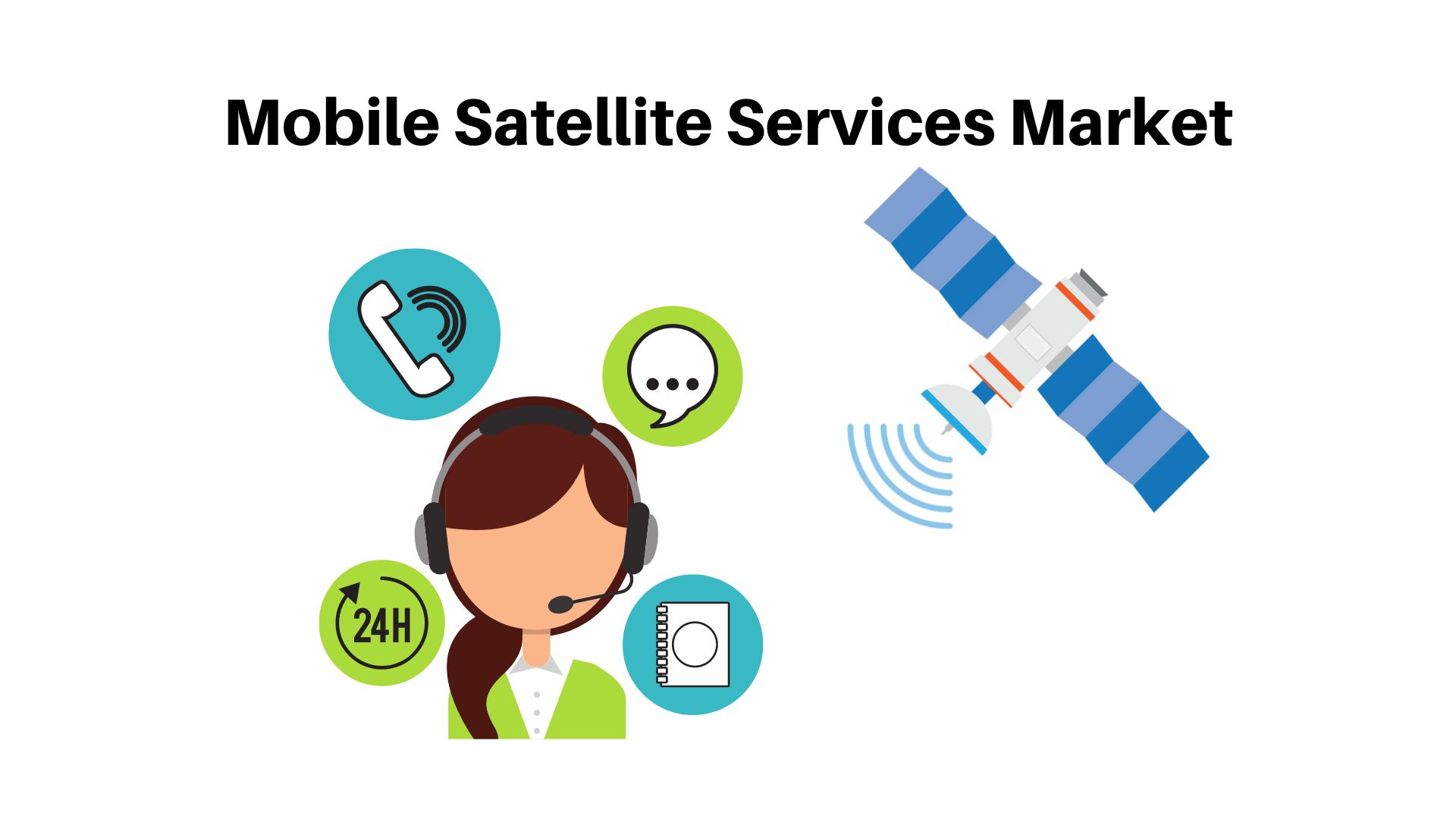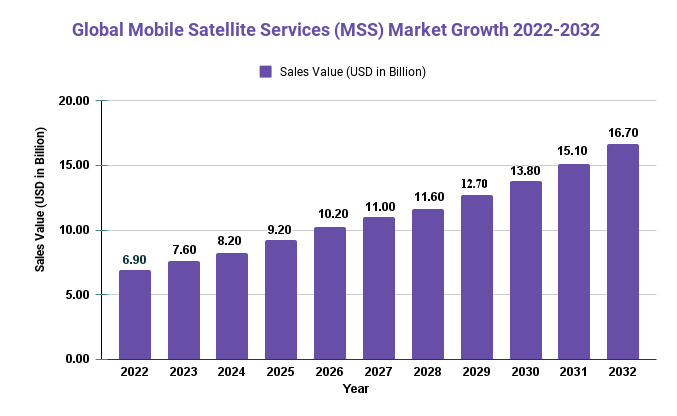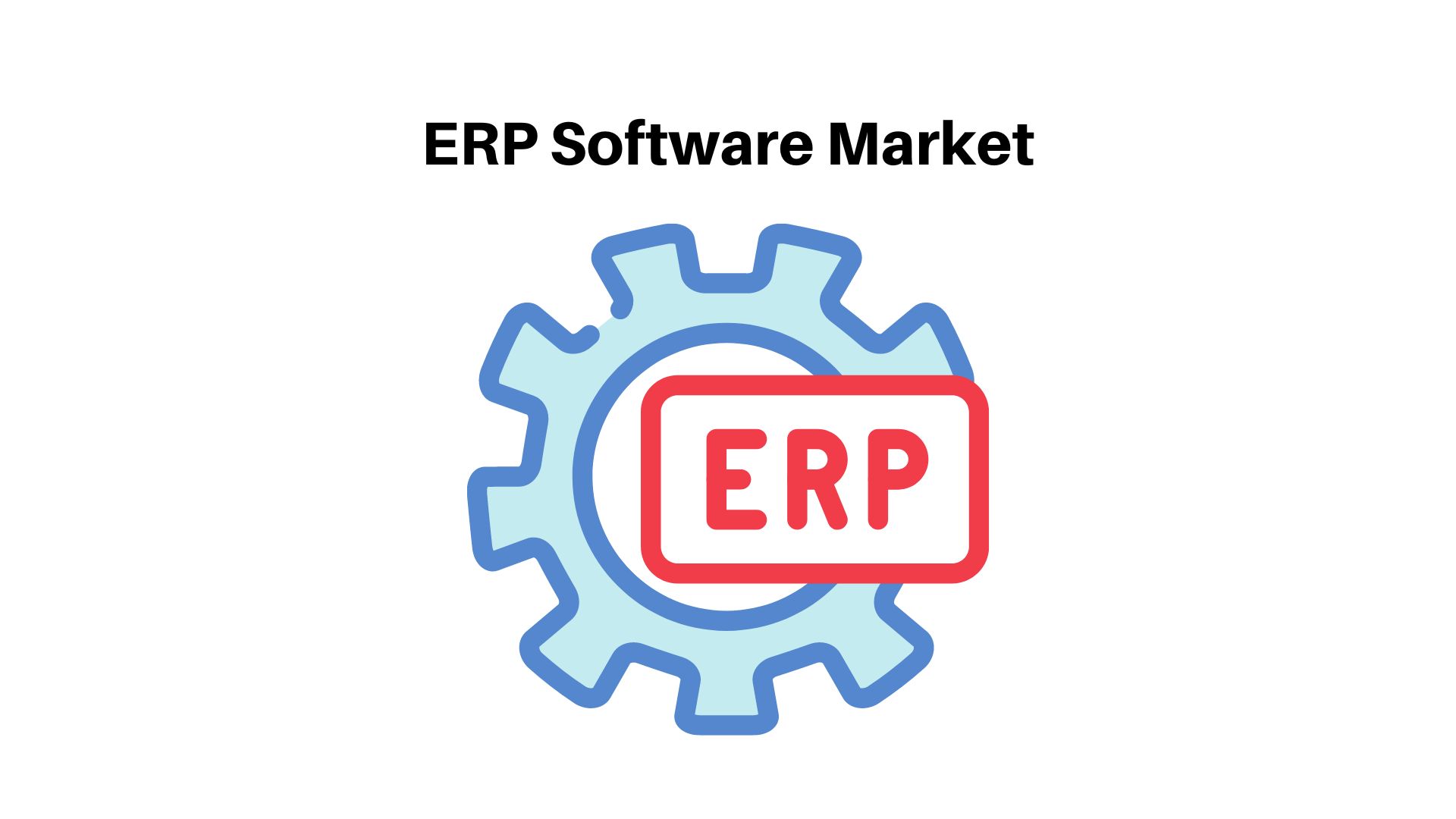Mobile Satellite Services (MSS) Market Size USD 16.7 bn | Vendors Analysis (Ingenico, Verifone) By 2032 | Analysis on Impact of US crises

Page Contents
Market Overview
Published Via 11Press: In 2022, the mobile satellite services market was estimated to be worth USD 6.9 billion; it was forecasted to reach its peak value of USD 16.7 billion by 2032 at an annual compound growth rate (CAGR) of 9.5% between 2022 and 2032.
Mobile Satellite Services (MSS) refer to communication services provided via satellite to mobile devices like smartphones and tablets, providing uninterrupted connection in remote places where traditional terrestrial networks cannot reach. With the rising need for uninterrupted communications in remote places, growing adoption of IoT devices, and rising demands for high-speed data services, demand for mobile satellite services is on the rise.
The report highlights that the increasing demand for mobile satellite services in emerging economies and the increasing adoption of satellite communication technology across various industries are driving the market growth. By application, it divides MSS into voice, data, tracking/monitoring, and others; data applications are expected to hold the majority share by 2021 due to increasing demands for high-speed data transfer across various industries. Moreover, the government and military sectors are major users of MSS, particularly for applications such as communication, navigation, and surveillance.
Regionally, North America was expected to dominate the market in 2021 due to the number of major players present there and the high demand for mobile satellite services within government and military organizations. On the other hand, Asia Pacific was predicted to experience the highest growth rate over this forecast period due to the increasing adoption of these technologies in developing economies such as China and India.
It is essential to note that these projections were made prior to the COVID-19 pandemic, which has drastically impacted many industries including the MSS market. Nonetheless, it appears likely that demand for satellite communication systems will continue to grow over the long haul as satellite technology becomes more integral for sectors such as aviation, maritime transportation, and oil & gas extraction.
Would you like to access the statistical information, graphs, and key players' tactics? click here

Key Takeaways
- In 2023, the commercial segment dominated the market due to the increasing adoption of mobile satellite services by enterprises to connect their remote workforces and assets.
- North America is the leading market for mobile satellite services due to the widespread adoption of IoT devices, increasing demand for high-speed data services, and growing investments in advanced satellite technologies.
- The Asia Pacific region is expected to experience significant growth over the forecast period due to the increasing adoption of mobile satellite services in emerging economies such as China and India.
Regional Snapshot
North America is the leading market for mobile satellite services, driven by an increase in IoT device adoption and rising demand for high-speed data services.
- Europe: A significant market for mobile satellite services has emerged due to the increasing need for reliable communication in remote areas and the growing adoption of satellite-based navigation systems.
- Asia Pacific: The mobile satellite services market is experiencing a meteoric rise, driven by the rising adoption of these services in emerging economies such as China and India, along with increased investments in developing advanced satellite technologies.
- Rest of the World: There is an expanding market for mobile satellite services, driven by an increasing need for uninterrupted communication in remote and inaccessible places.
Drivers
- Growing demand for uninterrupted communication services in remote and inaccessible places
- Increased adoption of IoT devices
- Rising need for high-speed data services
- Increased investment in satellite technologies
- Growing adoption of satellite-based navigation systems.
Restraints
- High costs associated with satellite-based communication services
- Technical difficulties in implementing and maintaining these systems
- Limited availability of satellite spectrum
Opportunities
- Demand for high-speed data and connectivity in remote areas, disaster zones, and underdeveloped regions is rising.
- MSS is being increasingly utilized for IoT applications such as fleet management, asset tracking, and smart agriculture.
- In the maritime and aviation sectors, MSS is becoming more important for navigation, communication, and safety.
- Recent advances in satellite technology and the miniaturization of components have enabled cost-effective MSS solutions.
- Military and government organizations are increasingly turning towards MSS for communication and surveillance purposes.
Challenges
- High cost of MSS services compared to terrestrial alternatives.
- Limited bandwidth and spectrum availability could cause congestion.
- Technical difficulties and regulatory obstacles related to the deployment and operation of MSS networks.
- Alternative communication technologies such as 5G and Low Earth Orbit (LEO) satellite constellations pose competition to traditional GSM services.
- Limited coverage may exist in certain areas due to geostationary satellite positioning issues and weather-related disruptions.
Recent Developments
- In 2021, OneWeb launched 36 satellites to expand their LEO constellation for global broadband coverage.
- Inmarsat launched its newest satellite, GX5, in 2019 to offer high-speed broadband connectivity to aviation and maritime industries.
- In 2019, Iridium Communications launched its upgraded satellite constellation, Iridium NEXT, providing improved MSS services around the world. China had already successfully launched its first dedicated mobile satellite, Tiantong-1 in 2016, providing MSS coverage to users within China and neighboring regions.
- SpaceX, Amazon, and OneWeb are planning to launch LEO satellite constellations to provide global broadband connectivity.
Key Market Segments
Type
- Video Services
- Voice Services
- Data Services
- Tracking and Monitoring Services
Application
- Oil and Gas
- Media and Entertainment
- Mining
- Military and Defense
- Aviation
- Transportation
- Others
Key Market Players
- Ericsson
- Globalstar
- Inmarsat
- Iridium Communications
- Orbcomm
- Echostar Corporation
- Intelsat General Corporation
- Singtel
- Viasat
- Telstra
Report Scope
| Report Attribute | Details |
| The market size value in 2022 | USD 6.9 Bn |
| Revenue forecast by 2032 | USD 16.7 Bn |
| Growth Rate | CAGR Of 9.5% |
| Regions Covered | North America, Europe, Asia Pacific, Latin America, and Middle East & Africa, and Rest of the World |
| Historical Years | 2017-2022 |
| Base Year | 2022 |
| Estimated Year | 2023 |
| Short-Term Projection Year | 2028 |
| Long-Term Projected Year | 2032 |
Frequently Asked Questions
Q: What are Mobile Satellite Services (MSS)?
A: Mobile Satellite Services (MSS) are telecommunications solutions that deliver voice and data communications to mobile users through satellite technology in remote places where terrestrial infrastructure may not exist or is limited. MSS services enable voice and data communications for those without access to terrestrial infrastructure, helping address the gap in access for those in remote places where terrestrial infrastructure cannot be provided or is limited.
Q: What are the applications of Mobile Satellite Services (MSS)?
A: Mobile Satellite Services (MSS) are employed for a variety of tasks such as voice and data communication, tracking/monitoring, remote sensing, and navigation.
Q: What are the key drivers of the Mobile Satellite Services (MSS) market?
A: The primary factors driving growth in this space include an increasing need for reliable communication services in remote places, expansion in transportation services, and rising adoption of connected devices.
Q: What challenges confront the Mobile Satellite Services (MSS) market?
A: The Mobile Satellite Services (MSS) market faces numerous obstacles, such as high initial investment costs, complex regulatory requirements, and competition from alternative technologies such as terrestrial wireless networks.
Q: What are the different types of Mobile Satellite Services (MSS)?
A: MSS can be broken down into handheld, vehicular, maritime, and aero categories.
Q: Who are the major players in the Mobile Satellite Services (MSS) market?
A: The major players within this space include Inmarsat, Iridium Communications, Thuraya Telecommunications Company, Globalstar, and Orbcomm.
The team behind market.us, marketresearch.biz, market.biz and more. Our purpose is to keep our customers ahead of the game with regard to the markets. They may fluctuate up or down, but we will help you to stay ahead of the curve in these market fluctuations. Our consistent growth and ability to deliver in-depth analyses and market insight has engaged genuine market players. They have faith in us to offer the data and information they require to make balanced and decisive marketing decisions.



